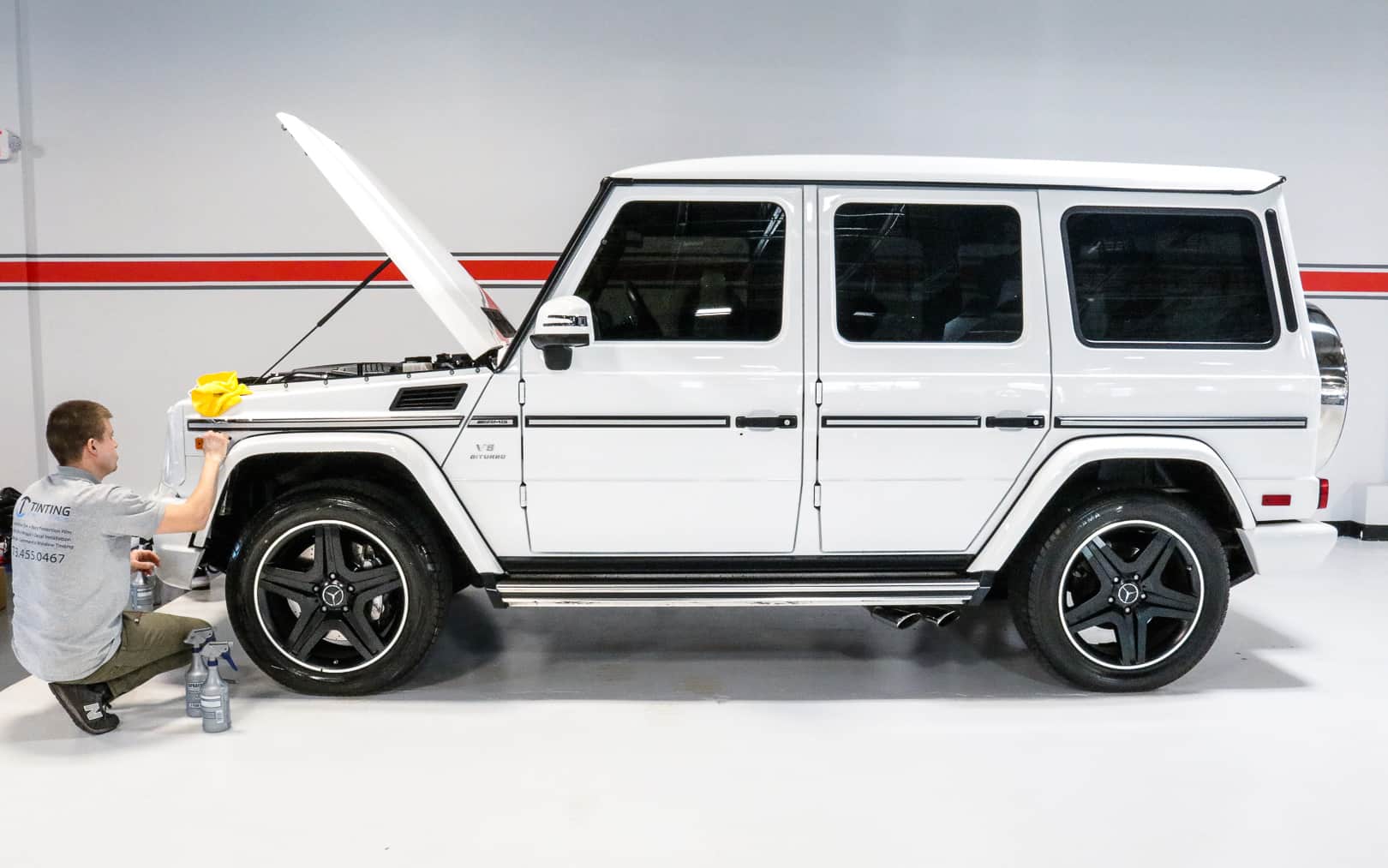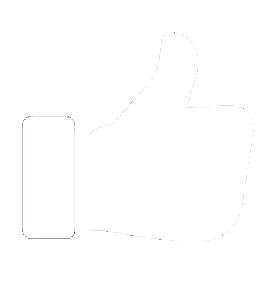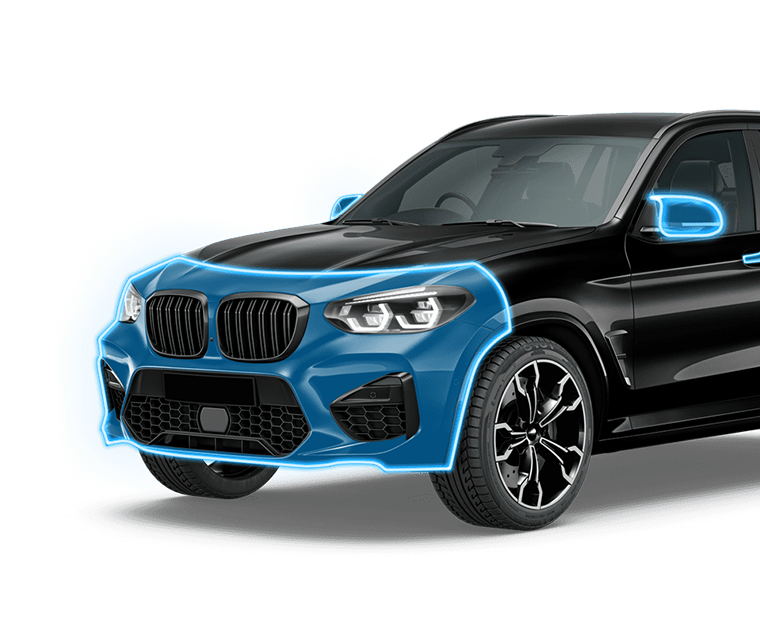





































































































































































































Full Car Paint Protection Film: Shield Your Paintwork From Damage

Full car paint protection film is the optimal way to keep your original paintwork in perfect condition. Paint protection film (PPF), or clear bra, as it is otherwise known, is transparent vinyl that’s applied to the paintwork of any vehicle to protect it from rock chips, minor scratches, bug splatters, tree sap, and, swirl marks. The most technologically advanced films are 7 to 10mil thick, offer stain resistance, and include self-healing properties. Call us at 773-455-0467 or 312-212-0493 for a free quote!
Our packages
Why choose full car paint protection film?
Full car paint protection film is the single most important protective layer you can install on your vehicle to avoid damaged bodywork. Applying PPF to an entire vehicle brings you several advantages – easier maintenance as it protects against corrosion and chemicals, a permanent glossy surface, longer paint duration and a better resale value. Yes, this protection measure requires a solid upfront investment, it will fully pay off and save money eventually.
It does not matter whether a new car belongs to a luxury or a budget segment, the paint correction procedure is always a burden to the owner’s pocket. But these expenses can be fully avoided if you make an informed decision to protect the paint in time. Opt for a full wrap to prolong your car’s new look without additional maintenance and excessive washing.
Where to get the procedure done in the shortest possible time?
Tinting Chicago offers high-quality automotive PPF for car paint protection that doesn’t turn yellow and is resistant to UV damage. It comes with a 10-year manufacturer’s warranty. To install protection film on your vehicle, contact us today at 773-455-0467 or 312-212-0493.
Top 5 benefits of clear bra
A thin layer of car paint protection coating functions as a powerful barrier for the car’s surface. Its role is equally crucial for a brand new car as well as a used vehicle. PPF protects entire vehicles from unpredictable yet typical troubles like UV rays, rock chips, bird droppings, mineral deposits and other environmental contaminants and chemicals. Furthermore, PPF coating possesses a certain degree of self-healing property and fully restores after minor damages. The main advantages you get after the PPF wrapping:
- Superior protection for original paint on vehicles
- Crystal clear so doesn’t change the look
- Gives a permanent polished finish
- Choose from gloss or satin finish
- Maintains the resale value
What are the shortcomings of PPF finishing?
The only issue a car owner can face is incorrectly applied film that results in bubbles, wrinkles and messy seam edges. It usually happens when PPF procedure is conducted by someone with insufficient experience. So make sure to trust PPF installment to professionals only.
Cost of installing PPF film on a vehicle
To wrap a whole vehicle in a clear bra, you are looking at a cost of $5499 onwards. If you own a high-end sports car or a unique vintage car, remember that this is a valuable investment in your asset. PPF film lasts 7 to 10 years and usually comes with a 10-year warranty.
The cost of installing paint protection film is dependent on the following factors:
- Brand of film
- Area of surface covered
- Skill of installer
- Complexity of vehicle
Is that possible to bring down the cost of a PPF wrap?
If you are unable to afford to fully wrap your car in a clear bra, then another option is to either partially wrap or fully wrap the front end of the car. This includes covering the hood, bumper, fender lights, and mirrors.
Most common areas to cover with PPF
While some vehicles are fully wrapped in protective film to protect the original paintwork, many customers with a limited budget choose to only partially wrap the vulnerable or high-impact areas of their vehicle – usually the front section, including the bumper, fender, side mirrors, and hood.
- Fenders/partial fenders
- Full hood/partial hood
- Door edges
- Side mirrors
- Front bumper
- Front of wings
- Rocker panels
- Headlights
What is the most recommended partial PPF package?
It is advisable to consider a full front PPF package. It provides superb protection for the entire front of a vehicle: the front bumper, the entire hood, both full front fenders, the mirror backs, and the front headlamps.
Paint protection for a new car
It is often a question of whether a new car needs further investment. Many dealers offer to apply a paint sealant before car owners pick their new purchase. However, the customer’s initial reaction is to avoid finishing with paint protection coatings due to the high cost. But PPF wrapping of brand new vehicles is worth every cent. Even if this solution is pricey, it will help you avoid paint job expenses in the long run. Additional protection of the paint surface will finally turn out to be much cheaper, considering the cost you could have spent on regular cleaning, repeated polishing with car wax and periodic paint correction.
Will PPF change your car’s appearance?
It is one of the things that clients are worried about before applying paint protection new car wrap. So it is vital to understand what to expect from PPF coating and how it works. Paint surface protection film was invented to prolong the duration of your car’s exterior. It is not meant to change the aesthetics of your vehicle. With a thickness of several millimeters, the tape is not visible on a car while protecting it.
Vinyl wraps vs PPF
Paint protection film and vinyl wrap should not be confused as there are key differences between the two products. Vinyl wrap is a relatively thin film that is applied to the bodywork of a vehicle to primarily change the aesthetic appearance or add promotional graphics. The paint protection film is a relatively thick, opaque film that is harder to install and provides a protective coating to the original paintwork.
Which finish is stronger, vinyl or PPF?
The vinyl coating will cope well with UV rays and minor surface damage like water spots, while PPF is its heavier version with more powerful protection from debris and other environmental hazards.
Should I install PPF myself or get a professional to do it?
The installation process for paint protection film is fiddly and challenging, even for experts with years of experience. For this reason, PPF installation is usually carried out by professionals. Protection film needs to be installed in a well-lit, dust-free environment and preferably by more than one set of hands. Just remember to entrust the application process to professionals who know how to treat your car flawlessly – with no seams visible or misalignment, without air or water bubbles between the paint and film or other potential shortcomings. PPF will allow you to forget the most common new car wear and tear issues for up to ten years.
What should you know if you still prefer a DIY PPF installment?
Those who still consider applying paint protection film at home, should purchase pre-cut PPF kits from a reliable manufacturer. And note that this procedure cannot be carried out outdoors. You will need a spacious and clean garage to avoid dust, dirt and other contaminants that can affect the final result.
Best paint protection film brands
There are many different paint protection films on the market, varying in clarity and thickness. Some have a self-healing top layer, others don’t. Generally speaking, the thicker and clearer the film, the better quality it is. However, to be confident you are choosing the correct brand for your car, speak to our professional installers at Tinting Chicago.
What are the main benefits of EXPEL film?
Tinting Chicago experts opt for PPF from XPEL. Films from this manufacturer come with a top layer of self-healing polymer, enabling the coating to restore itself from scratching marks at hot temperatures.
PPF is self-repairing
The most advanced automotive paint protection film also contains self-healing technology, meaning light scratches and swirl marks can be removed easily by applying hot water or a heat gun to the affected area of the film. It should be noted that the self-healing layer will only protect against light scratches that are 6 to 8mm deep, it won’t protect against deep scratches caused by rock chips and other debris on the road.
Do all PPF options come with self-healing property?
Only some PPF products are self-healing. Once you have made up your mind to wrap your car with protective paint film, make sure you check for this feature, as it will prove more durable in the long run.
Clear paint protection film comes in a standard gloss finish and a satin finish, otherwise known as ‘Stealth’ in the automotive industry. Either finish can be applied to any type of painted surface on a vehicle. A gloss finish will enable your car look showroom new for a more extended period, while matte coating adds a bit of a frosted look.
Which PPF finish is more durable?
From a practical point of view, both gloss and matte finish do the same job when it comes to paint protection. If you are concerned about aesthetics, then it is better to opt for a gloss finish that will make your vehicle looks truly luxurious.
Tips for caring for paint protection coatings
PPF clear coat makes an entire car much less vulnerable to scratches, fading and deterioration of the painted surface. It forms a reliable shield against various external threats – mechanical damage, harsh weather conditions, bird droppings and other natural debris. But at the same time, you need to properly care for a wrapped car to contribute to the longevity of the finish.
· Only hand wash is allowed (avoid tunnel washes)
· Keep a pressure hose at least a foot away from the surface of the vehicle
· Remove dirt, bird dropping, and bug splatter as quickly as possible.
Can you put ceramic coatings on PPF?
Yes, you can apply a professional ceramic coating to PPF. The main purpose of PPF is to absorb physical damage, whereas the purpose of a ceramic coating is to make the car easier to clean and maintain. When a ceramic coating is added to paint protection film, it gives it hydrophobic properties that help extend the life of the film.
Sun protection for car paint
UV rays remain one of the severest threats to a vehicle’s paint. Sun exposure leads to fading, discoloration and other deterioration of painted surfaces. There are various means to minimize a vehicle’s paint damage – car covers, regular polishing and waxing. However, these procedures need to be frequently repeated, and even so, they do not always bring the desired effect. But PPF serves as a workable solution that will let you forget about UV damage for years and avoid a costly paint job and maintenance.
Will PPF coating protect car paint from UV influence?
High-quality PPF blocks ultraviolet radiation preventing it from ruining the paint surface. You may not be afraid of prolonged sun exposure with this protection. It will also protect your new cars from other harsh weather conditions. Care no longer about sun, rain and sleet – PPF will care for your paint protection, helping your new vehicle withstand the test of time and environmental hazards.
Asked Questions See more
Whether or not seams are visible on your bodywork is dependent on the quality of the paint protection film installation. At Tinting Chicago, our installers are both experienced and highly trained and know how to apply protection film so that the seams are more or less invisible.
It’s always advisable to hand wash, rather than tunnel wash vehicles that are covered with paint protection film to avoid damage or lifting of the film.
Most paint protection manufacturers offer warranties against cracking, yellowing, and peeling for 5 to 7 years. However, other manufacturers produce films that come with a 10-year warranty.








